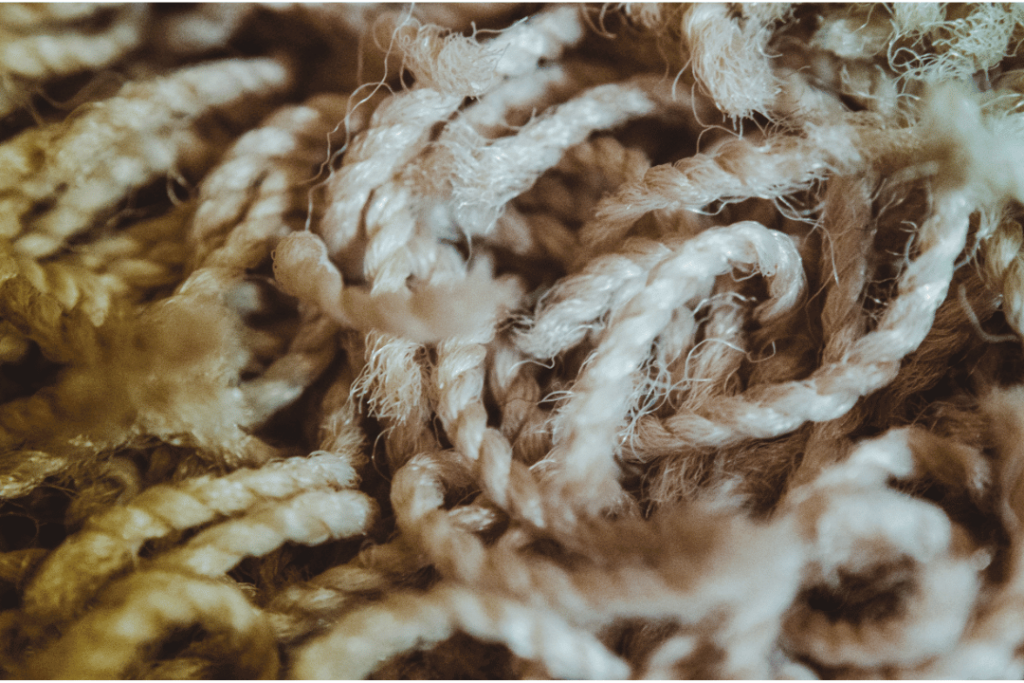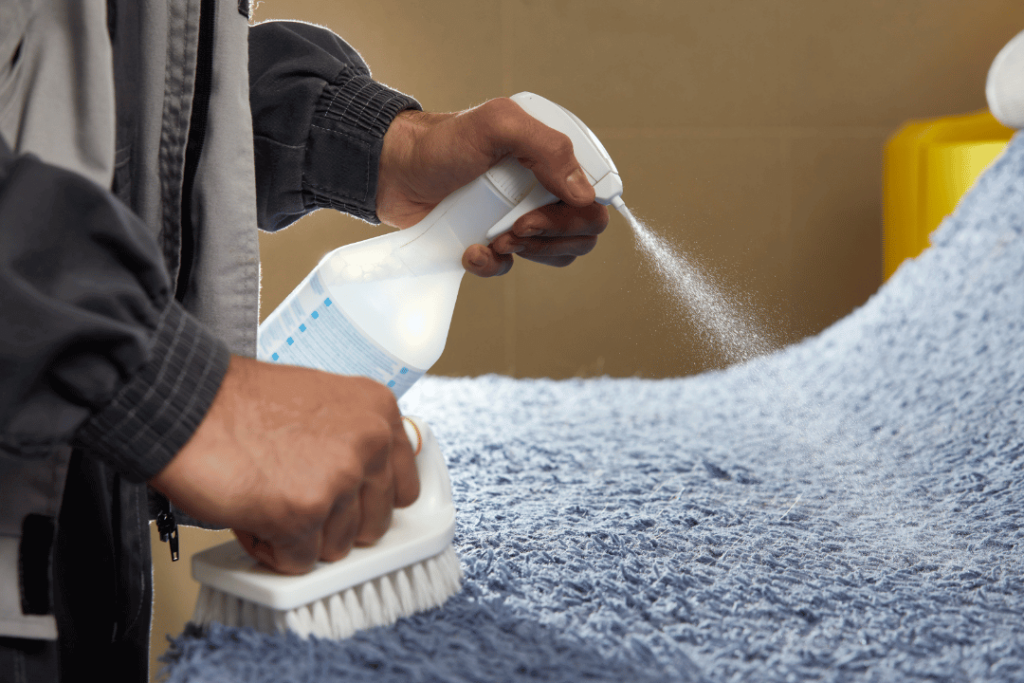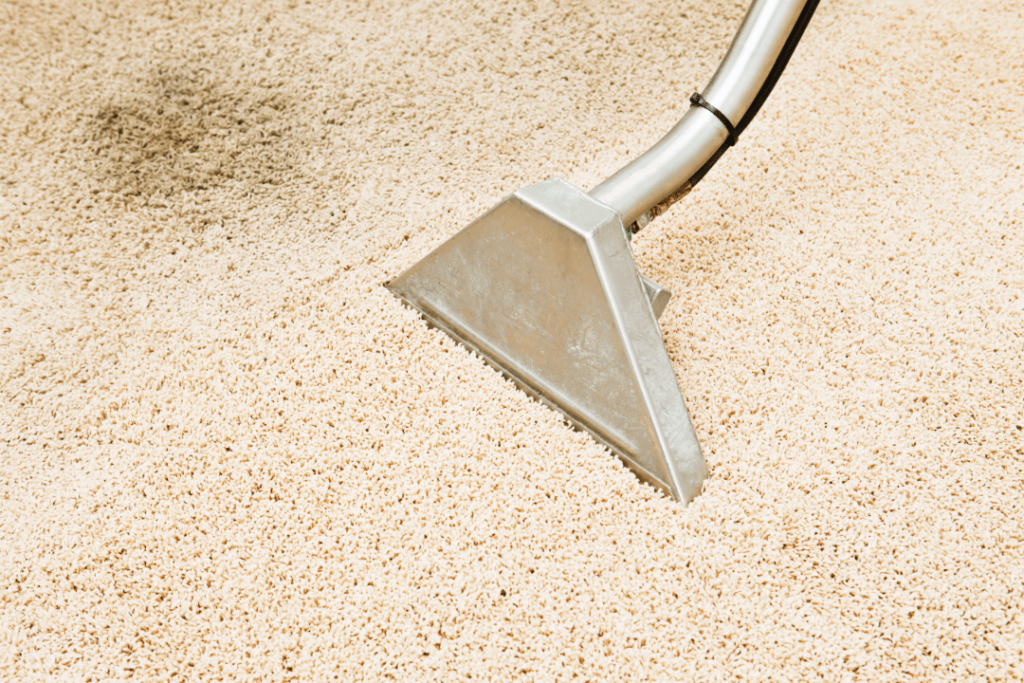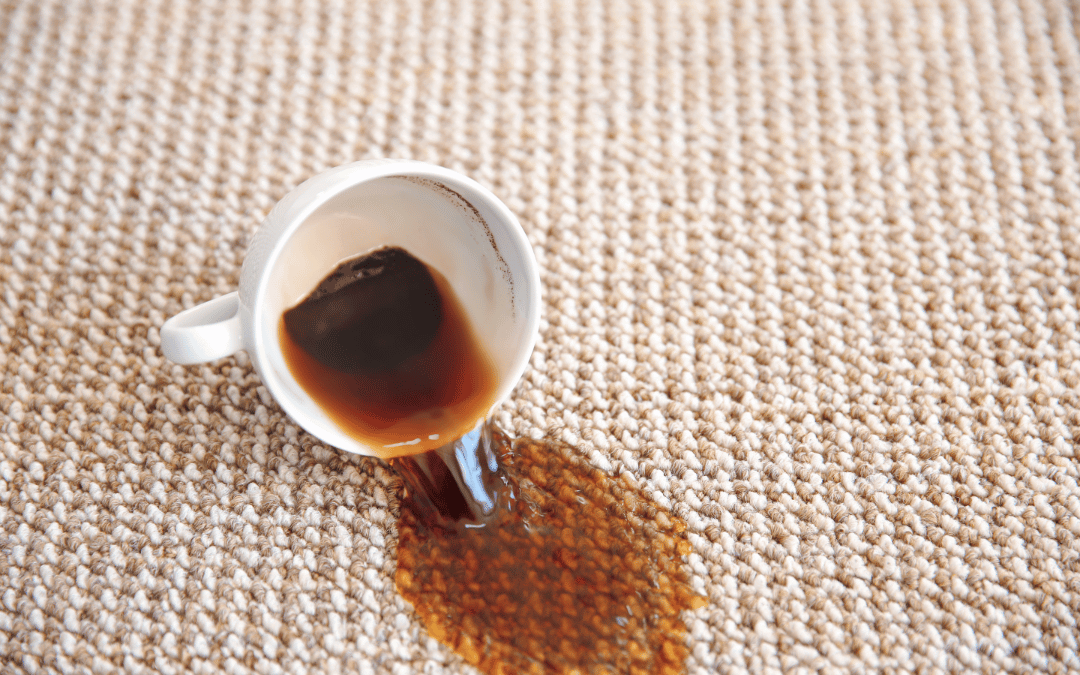Are you seeing old stains reappear on a newly cleaned carpet? Find out why carpet wicking occurs and the steps you can take
Have you ever had stains in your carpeting disappear, only to reappear after they’ve been steam cleaned or gotten wet? Are you noticing your carpet looks worse the more humid it gets in the building? There is a good chance you are wondering what exactly is going on.
Luckily, Whittaker has all of the answers you need to maintain your carpet’s appearance.
Carpet wicking occurs when moisture penetrates the carpet fibers, causing dirt particles to rise up from deep within the fabric. To prevent this issue from occurring in your commercial space, it’s important to understand how moisture can cause wicking as well as what methods you can use for removing stains if they reappear. In this post, we’ll explore these topics in depth so you can keep your carpets looking their best. Let’s get started!
What is Carpet Wicking?
Carpet wicking causes the reappearance of old stains

Carpets in busy areas can often suffer from a phenomenon known as ‘wicking’, where moisture is absorbed up the fibers and into the backing of the carpet, causing persistent stains. Carpet wicking occurs when moisture from spills and cleaning agents move up the carpet fibers from the backing of the carpet.
This can cause recurring stains that are difficult to remove, even after professional cleaning. Any time the carpet gets wet, the stains that have been “hiding” in the carpet backing ascent the carpet fibers and cause stains to reappear. Any type of moisture can cause wicking—even steam cleaning.
Inadequate air circulation, an inefficient HVAC system, and poor ventilation design within a building can also add fuel to the fire when it comes to carpet wicking. Allowing carpets too little time to dry before they are walked on again or using excessive amounts of water during deep cleaning processes can create ideal conditions for recurring stains caused by wicking.
Carpet wicking is a potential issue that could damage your carpets, and it’s imperative for those involved in professional carpet cleaning services to understand how to avoid this. To maximize the lifespan of your carpets, following certain maintenance and care guidelines is a must—let’s take a look at some tips on how to do so.
How to Prevent Carpet Wicking?
By properly maintaining your carpets, you can minimize the effects of wicking

Carpet wicking often occurs when carpets are not professionally cleaned and dried properly. The wicking process begins with spills or other sources of moisture that penetrate deep into the carpet fibers. As the cleaning agents move through the carpet during spot cleaning or a deeper cleaning process, they draw up more of the spilled material from below causing it to resurface on top of the carpet as recurring stains.
To keep your carpets looking their best, regularly vacuum your carpets to keep them looking fresh between professional cleanings. For small areas, spot treatments should be done by blotting with an absorbent cloth and rinsing with cold water afterward. Ensure that all excess liquid is removed before applying a commercial cleaner product directly onto the affected area then continue to blot until no more residue appears on the cloth. Repeat each application and rinse cycle until the stain has been completely eradicated prior to commencing drying.
By following proper cleaning techniques, regular maintenance and care, as well as investing in professional carpet cleaning services when needed, you can help prevent wicking from frequently occurring. For those moments when spots reappear in spite of your attempts to keep them from doing so, keep reading!
How to Remove Stains if They Reappear?
When carpet wicking causes stains to reappear, there are a few steps you should take

It is important to act swiftly when it comes to eliminating carpet stains. Spot cleaning solutions and techniques are effective for treating small, localized stains. However, for larger or more stubborn spots, professional stain removal services may be necessary.
Spot cleaning solutions come in a variety of forms including powders, sprays, gels, and liquids. These spot cleaners cause stain molecules to split apart to enable them to be wiped away or sucked up by a vacuum cleaner.
When using spot cleaners on carpets, always test an inconspicuous area first as some carpet materials may react differently than others when exposed to certain chemicals or solvents used in spot removers.
Using steam cleaners, professional stain removal services can deep clean carpets at high enough temperatures to kill bacteria while simultaneously extracting dirt particles and other debris from within the fibers of your carpeting. This leaves your carpet looking clean without causing any additional damage occurring, allowing you to rest assured that your carpets will be returned to their former glory.
However, just as steam cleaning can prevent carpet wicking, it can also cause carpet wicking. Since steam cleaning relies on heat and moisture to deep clean your carpet it can leave your carpets susceptible to wicking during the drying process.
Next, we will explore why steam cleaning causes wicking so that you can make an informed decision about which carpet cleaning method is best suited for your needs.
Why Does Steam Cleaning Cause Wicking?
If carpets are not allowed to dry properly, even steam cleaning can cause wicking

Steam cleaning is a popular method of carpet cleaning used in commercial spaces, such as schools and hotels. High-heat steam is utilized to break down dirt and other particles stuck in the fibers of carpets when using this method of cleaning.
However, this process can also cause wicking if not done properly. Wicking occurs when moisture from steam cleaning penetrates deep into the carpet’s backing or padding and is not allowed to properly dry. When the backing is wet, it causes stains to reappear after they have been removed through traditional cleaning methods.
To prevent wicking during steam cleaning, it is important to use proper techniques and equipment designed for this purpose. Technicians should make sure they are using enough water pressure to effectively remove all dirt without overwetting or saturating the carpets.
Otherwise, moisture may penetrate too deeply into them resulting in wicking later on. Finally, professionals should always ensure that the carpet is able to dry as quickly as possible. The less time it takes for the carpet to dry, the less chance there is for wicking to occur and for old, trapped stains to resurface on your newly cleaned carpet.
How Whittaker Systems Can Help
Carpet wicking can be a source of considerable harm to carpets, yet it doesn’t need to remain that way. Comprehending the fundamentals of carpet wicking and its mechanism can aid in thwarting it from occurring.
The machines and cleaning products produced by Whittaker do not lead to any forms of wicking. While getting your carpets steam cleaned is essential every few years, you can use Whittaker Systems and our CRYSTAL DRY® cleaning agent as a low-moisture way to make sure your carpets are properly maintained.
Discover the best carpet cleaning solutions for your commercial spaces with Whittaker’s selection of machines and products. With Whittaker, you can choose the best solution to keep your carpets looking spotless. Get in touch with a member of our team to learn more!

